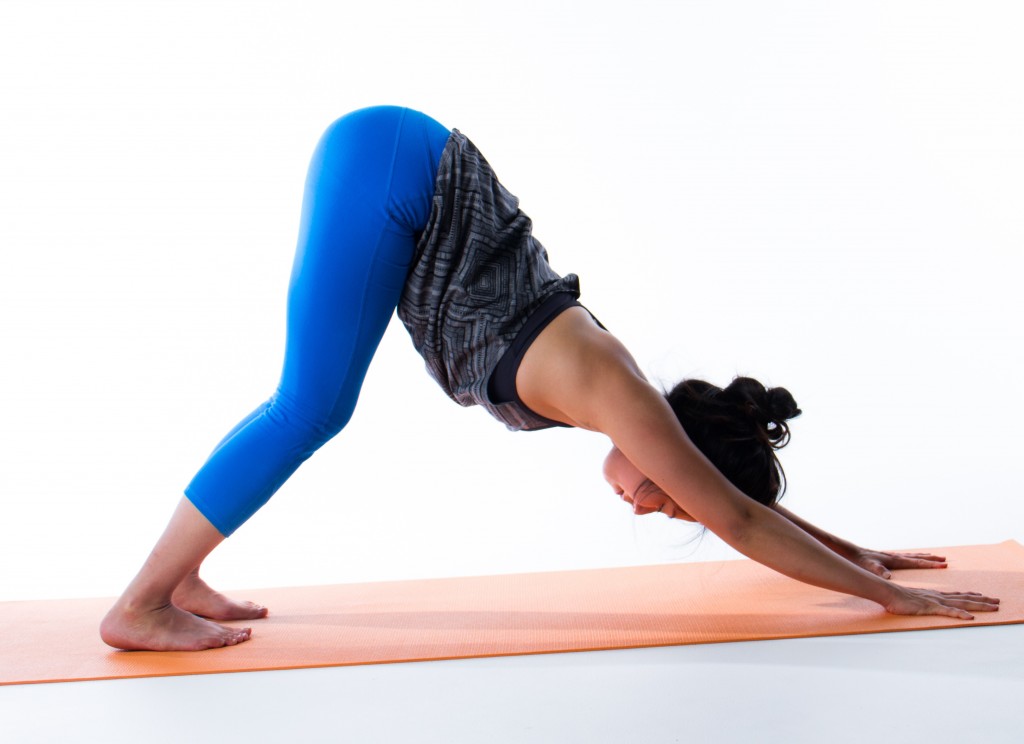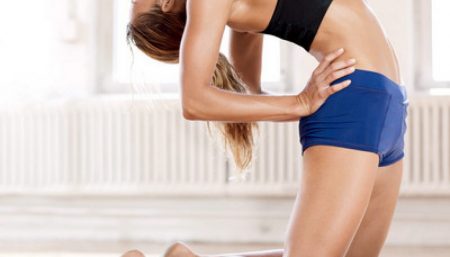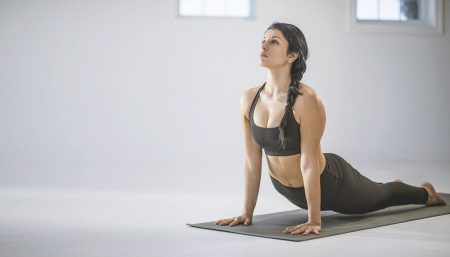The quadriceps muscles are a group of four that are located at the front of the thigh. They are unique compared to most muscles because they cross two joints (the knee and the hip).
The quadriceps muscle originates on the front of your hip bone, at an area known as the anterior superior iliac spine (ASIS), and it crosses over the hip joint on its way toward its insertion point on the knee. When your quads are tight, they pull down on this ASIS point, which in effect, pulls your entire pelvic bone forward, into an anterior tilt. Because the spine wedges in between the two hip bones (in back) it’s carried along with this forward movement. The spine adapts to the change in position by accentuating the normal lordotic curve.
When your tendons and muscles are not stretched, they will not work properly as well. This may escalate the chances of you developing a tear or strain.
Bridge
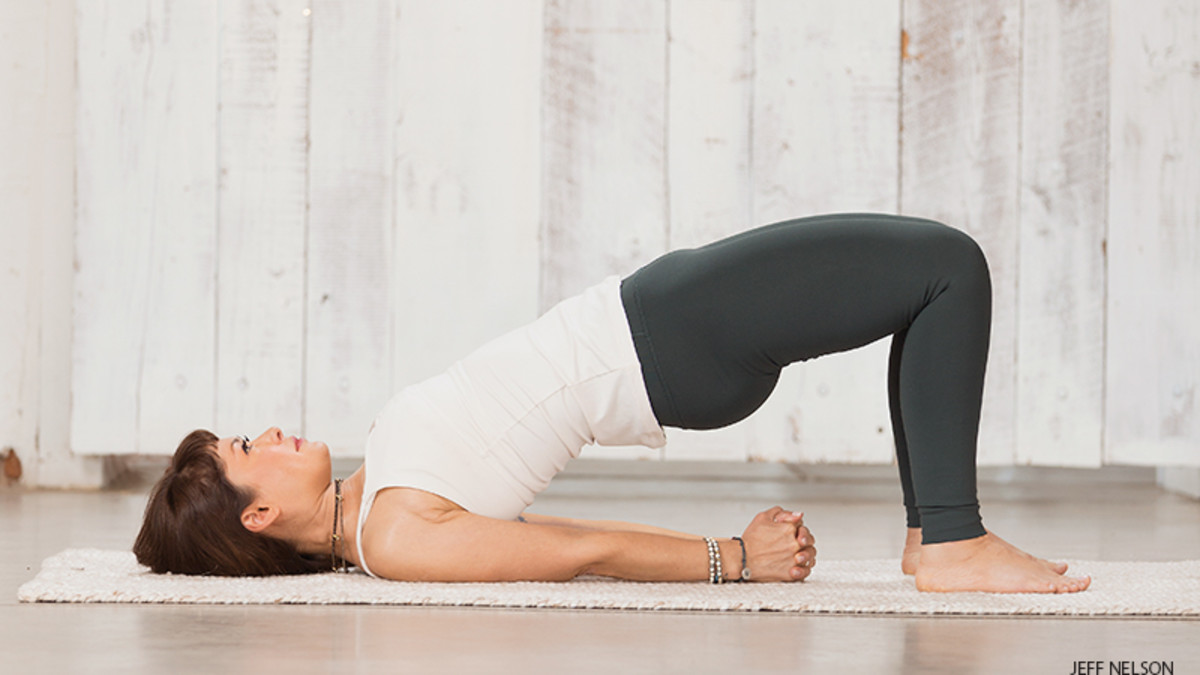
Start by lying on your back with your knees bent and your feet flat on the floor with ankles under knees. Your feet should be hip-width apart and parallel so all 10 toes point in the same direction. As you inhale, press into the backs of your arms and feet, tilt your pelvis up and lift your hips up until your thighs are about parallel to the floor. Place a block under your low back for added support. The block can be on the short, medium or tall height. Take your arms out to goalposts to further open the chest. Hold for up to a minute then release on an exhale.
Hero Pose (Virasana)
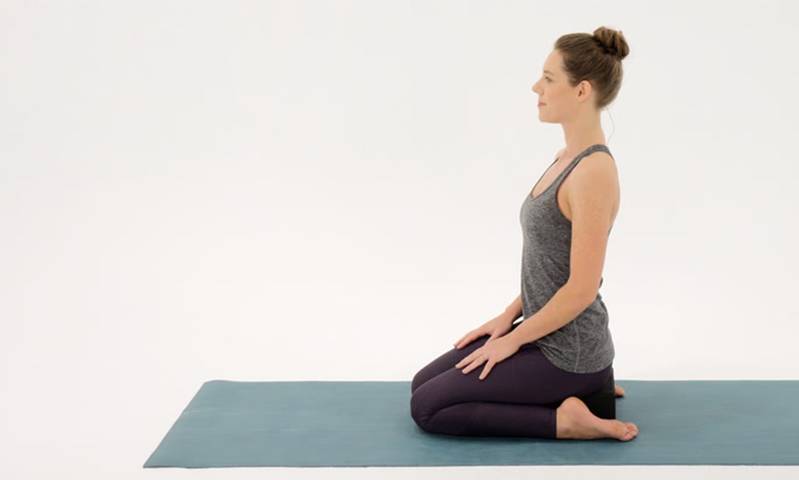
Start in an upright kneeling position with your hips over your knees and the tops of your feet flat on the mat. Keep your knees together as you separate your feet to either side until they are about 18 inches apart. This distance will vary somewhat depending on your size, but basically, you are spreading the feet apart to make room for your butt to come down to the floor between them. Do note that the feet separate, but the knees stay together. Exhale and lower your butt to sit on the floor between your feet. You may need to manually move your calf muscles out of the way to make this happen. Make sure that you are not sitting on your feet, but rather between them with the tops of your feet on the floor (meaning the toes are not tucked under). Your feet should point straight back, turning neither inward nor outward. Slide your shoulders away from your ears. Rest your hands in your lap. Remain in the pose for one minute or more. Release by pressing your palms into the floor and lifting your butt. Cross your ankles beneath your body and extend your legs into Staff Pose (Dandasana)
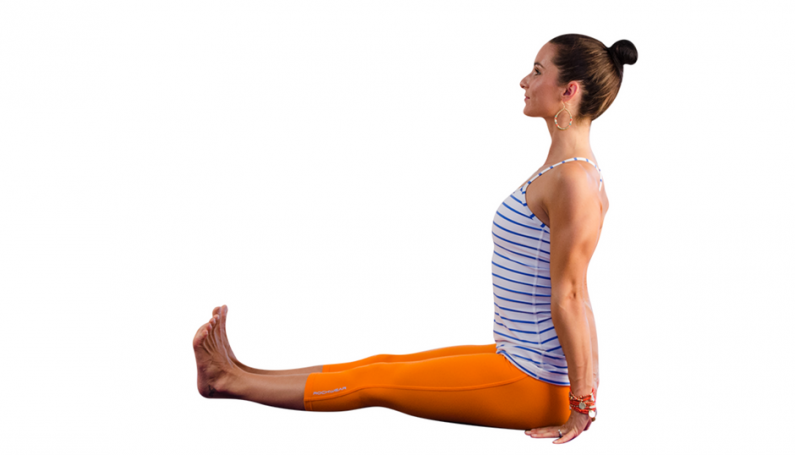
Hero Pose
Kneel on the floor (a folded blanket can help pad the knees and shins) with thighs parallel and butt lifted off the legs. Slide your shins and feet out just wider than your hips. Sit down on the floor between your shins and feet. If your butt doesn’t hit the floor, sit on a block or a book. Lengthen through your spine and relax your shoulders. Make sure your knees are in line with your shins. Rest your hands in your lap. If your butt touches the floor, consider deepening the pose by walking your hands behind you, fingers facing into your body. Lower one elbow and then the other so you’re resting on your forearms. To begin, stay in your variation of hero for 30–60 seconds.
Pigeon Pose (Eka Pada Rajakapotasana)
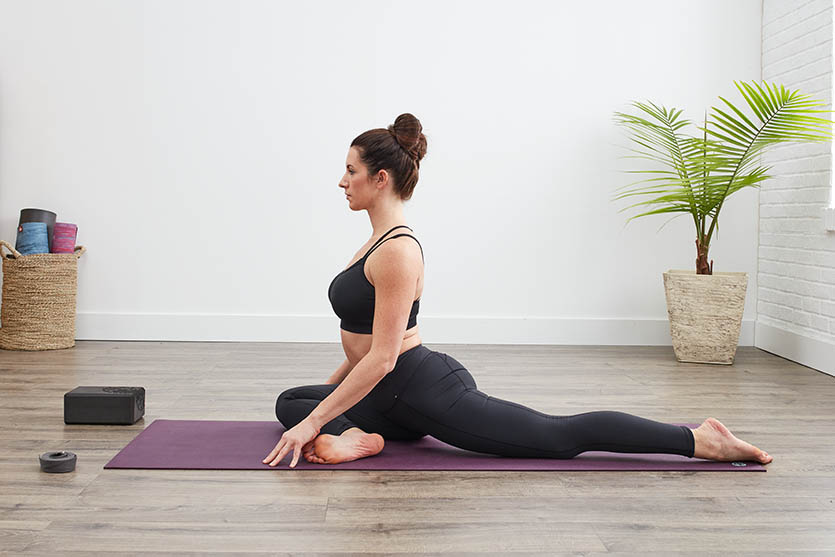
From Downward Facing Dog, bring the right leg up into a Down Dog Split. Bend your right knee and bring that leg forward as if you were going to step into a lunge. Instead of placing your foot down as you would for a lunge, bring your right knee to the floor on the outside of your right hand. The right shin may angle back towards the left hip or be more parallel to the front of your mat, depending on your flexibility. Release your left knee to your mat. Your left leg should be flat on the floor. Take a look backward and make sure that your left foot is pointing straight back. Square your hips towards the front of your mat. Take padding (a folded blanket works well) under the right side of your hip as necessary to make the pose more comfortable. If you are new to the pose, you can halt here. If you feel stable, bring your torso down into a forward bend over your right leg. Let the weight of your body rest on your right leg. Place your forehead on the floor. Continue squaring your hips and breathing into any tightness. Come back up, bringing your hands in line with your hips. To release, curl your left toes under and step back into a Downward Facing Dog. Repeat the pose on the other side.
Camel Pose (Ustrasana)
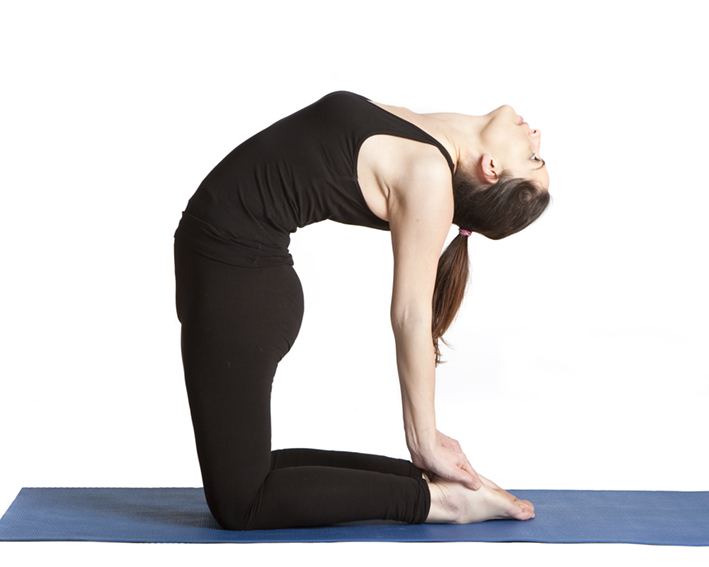
Kneel with body upright and hips stacked over the knees. Take padding (a blanket or fold your mat so it is double thickness) under your knees if they are sensitive. Draw your hands up the side of your body until your thumbs reach your armpits. Hook your thumbs into your pits for support as you start to open your chest toward the ceiling. Maintain the position of your chest as you reach your hands back one at a time to grasp your heels. If you need a little more height, tuck your toes under. Otherwise, the tops of the feet can be flat on the floor. Bring your hips forward so that they stay over your knees. If it feels good, let your head come back, opening your throat. If that doesn’t work for your neck, you can keep the chin tucked instead. Release by bringing your chin toward your chest and hands to your hips. Firm your abs and support your lower back with your hands as you slowly bring your body to an upright kneeling position.
After your muscles are properly warmed up, do these stretches for those tight quads—you’ll feel them loosen up in no time.
Disclaimer
The Content is not intended to be a substitute for professional medical advice, diagnosis, or treatment. Always seek the advice of your physician or other qualified health provider with any questions you may have regarding a medical condition.
